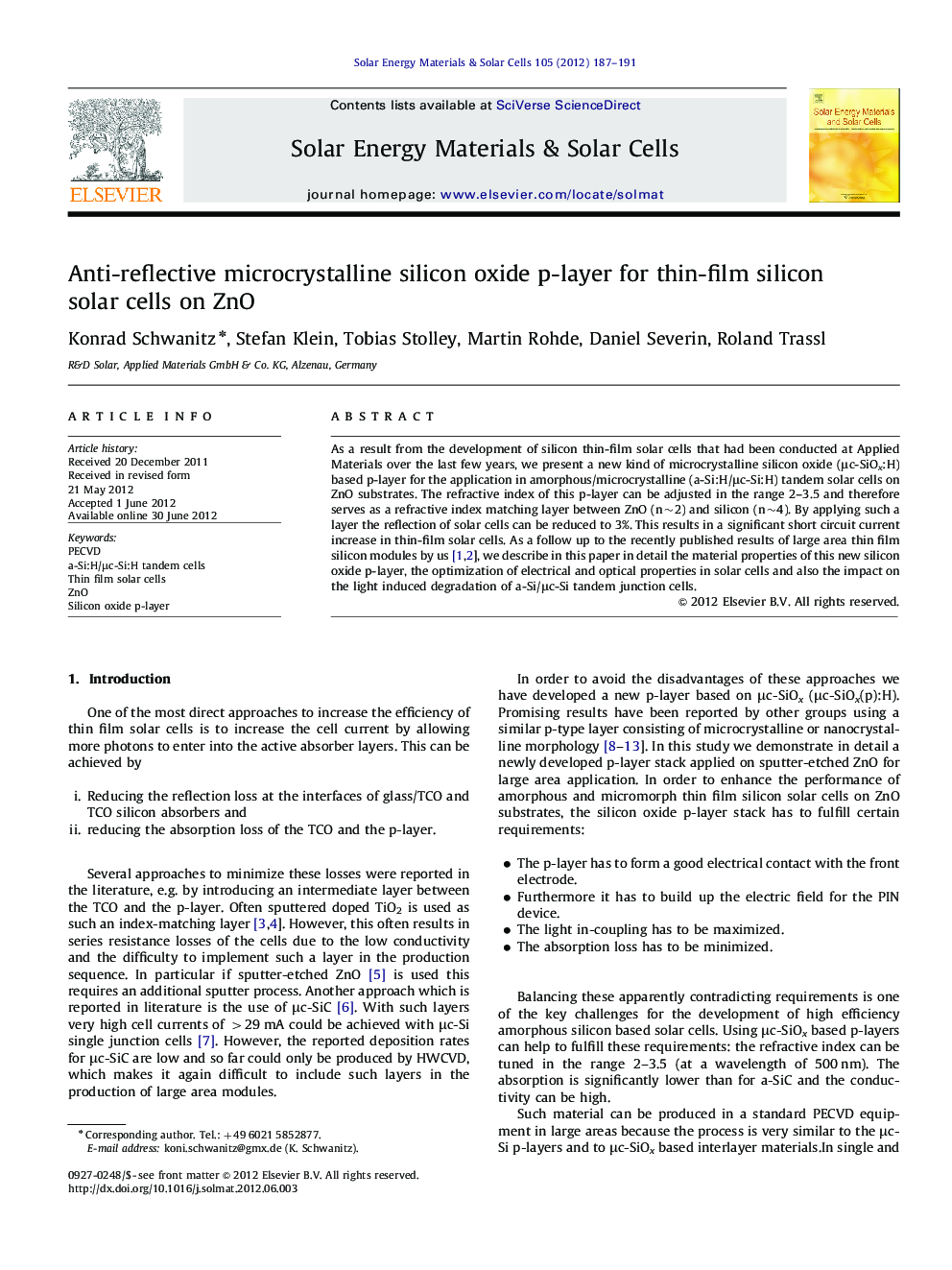| Article ID | Journal | Published Year | Pages | File Type |
|---|---|---|---|---|
| 78967 | Solar Energy Materials and Solar Cells | 2012 | 5 Pages |
As a result from the development of silicon thin-film solar cells that had been conducted at Applied Materials over the last few years, we present a new kind of microcrystalline silicon oxide (μc-SiOx:H) based p-layer for the application in amorphous/microcrystalline (a-Si:H/μc-Si:H) tandem solar cells on ZnO substrates. The refractive index of this p-layer can be adjusted in the range 2–3.5 and therefore serves as a refractive index matching layer between ZnO (n∼2) and silicon (n∼4). By applying such a layer the reflection of solar cells can be reduced to 3%. This results in a significant short circuit current increase in thin-film solar cells. As a follow up to the recently published results of large area thin film silicon modules by us [1] and [2], we describe in this paper in detail the material properties of this new silicon oxide p-layer, the optimization of electrical and optical properties in solar cells and also the impact on the light induced degradation of a-Si/μc-Si tandem junction cells.
► We reached reduction of the reflection of 2–3% with the silicon oxide p-layer. ► The absolute initial cell efficiency gain amounts 0.1% and the stable cell efficiency gain is 0.4%. ► The silicon oxide p-layer enhances the top cell current up to 0.3 mA/cm². ► The relative efficiency loss by LID is 9.1–10.5%, whereas with the conventional p-layer it is 12.5%. ► stabilized module efficiencies of 10.1% on 1100 × 1300 mm2 glass substrates have been reached
